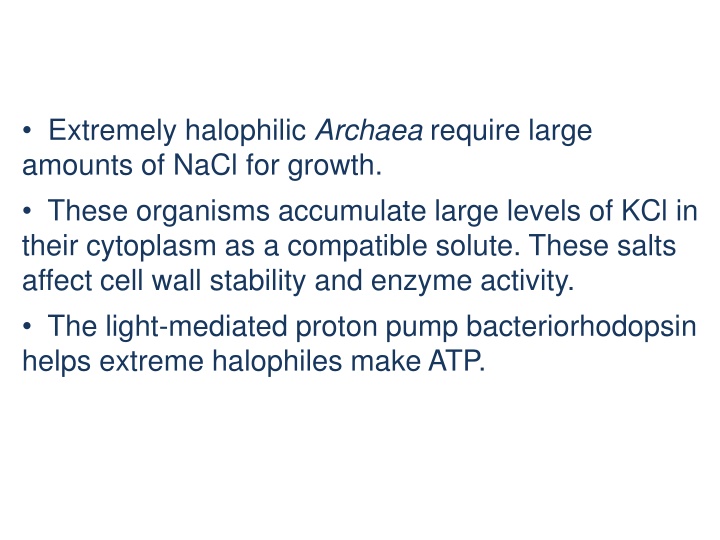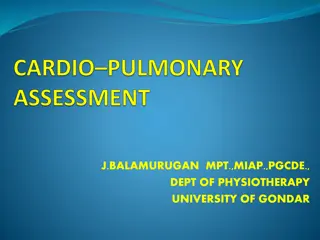
Extreme Halophiles: Adaptation, Growth, and Methanogenesis
Learn about the fascinating world of extreme halophiles, including their unique adaptation to high salt environments, the role of bacteriorhodopsin in ATP production, diverse cell wall chemistries in methanogens, and the process of methanogenesis for CH4 production. Explore the taxonomy, substrates, and coenzymes involved in the biological production of methane by methanogens.
Download Presentation

Please find below an Image/Link to download the presentation.
The content on the website is provided AS IS for your information and personal use only. It may not be sold, licensed, or shared on other websites without obtaining consent from the author. If you encounter any issues during the download, it is possible that the publisher has removed the file from their server.
You are allowed to download the files provided on this website for personal or commercial use, subject to the condition that they are used lawfully. All files are the property of their respective owners.
The content on the website is provided AS IS for your information and personal use only. It may not be sold, licensed, or shared on other websites without obtaining consent from the author.
E N D
Presentation Transcript
Extremely halophilic Archaea require large amounts of NaCl for growth. These organisms accumulate large levels of KCl in their cytoplasm as a compatible solute. These salts affect cell wall stability and enzyme activity. The light-mediated proton pump bacteriorhodopsin helps extreme halophiles make ATP.
Thermoplasmatales Thermococcales Methanopyrales Methano-bacteriales -coccales -microbiales -sarcinales Archaeoglobales Extreme Halophiles Haloalkaliphiles Marine Euryarcheota Sulfolobales Thermoproteales Pyrodictiales Desulfurococcales Marine Crenarcheota
Methanogens Methanogens Microbes that produce CH4 Found in many diverse environments Taxonomy based on phenotypic and phylogenetic features Process of methanogensis first demonstrated over 200 years ago by Alessandro Volta
Methanogenesis The biological production of CH4 from either CO2 plus H2 or from methylated organic compounds. A variety of unique coenzymes are involved in methanogenesis The process is strictly anaerobic. Energy conservation in methanogenesis involves both proton and sodium ion gradients.
Diversity of Methanogens Demonstrate diversity of cell wall chemistries Pseudomurein (e.g., Methanobacterium) Methanochondroitin (e.g., Methanosarcina) Protein or glycoprotein (e.g., Methanocaldococcus) S-layers (e.g., Methanospirillium)
Substrates for Methanogens Obligate anaerobes 11 substrates, divided into 3 classes, can be converted to CH4 by pure cultures of methanogens Other compounds (e.g., glucose) can be converted to methane, but only in cooperative reactions between methanogens and other anaerobic bacteria
Methanogenesis 1 Methanofuran: CO2 activation 2 Methanopterin: CO2 CHO methyl 3 COM CHO CH3 4 COM + COB + F430 methylreductase 5 CH3 Methane
Although hyperthermophiles live at very high temperatures, in some cases above the boiling point of water, there are temperature limits beyond which no living organism can survive. This limit is likely 140 150 C. Hydrogen (H2) catabolism may have been the first energy-yielding metabolism of cells.
Evloluntionary history of chloroplasts via endosymbiosis: 1 1 The Symbiont 2 2 3 3
Origin of the palstids: Cyanobacteria (Bacteria, Prokaryotes) Recipients: Various algae (Protists, Eukaryotes): 1. Glaucophyta 2. Cryptomonads 3. Rhodophyta 4. Chlorophyta 5. Euglenophyta 6. Chlorachniophyta 7. Chrysophyta 8. Heterocontae 9. Diatoms 10. Dinoflagellata (green) 11. Dinoflagellata (brown)






















